Table of Contents
ToggleWhen it comes to comforting a fussy baby, few items are as universally trusted as the silicone pacifier. Parents around the globe rely on this small yet powerful tool to soothe, calm, and support their infants’ natural sucking reflex. But why do babies use silicone pacifiers? And what makes silicone the material of choice over traditional rubber or plastic?
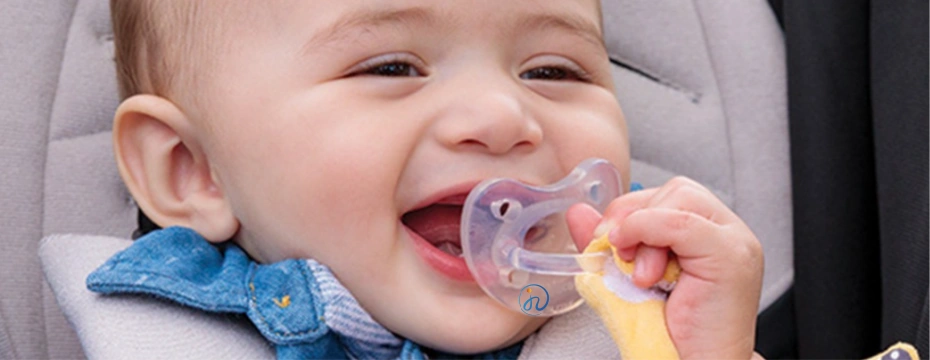
This comprehensive guide will explore the science, benefits, safety considerations, and practical advice behind the use of silicone pacifiers.
1. What Is a Silicone Pacifier?
A silicone pacifier is a baby product designed to satisfy a baby’s natural sucking instinct. It is made primarily from medical- or food-grade liquid silicone rubber , a synthetic, rubber-like material known for being:
- Hypoallergenic
- Odorless and tasteless
- Durable and tear-resistant
- Easy to clean and sterilize
Silicone pacifiers come in various shapes, sizes, and designs to cater to different age groups and preferences.
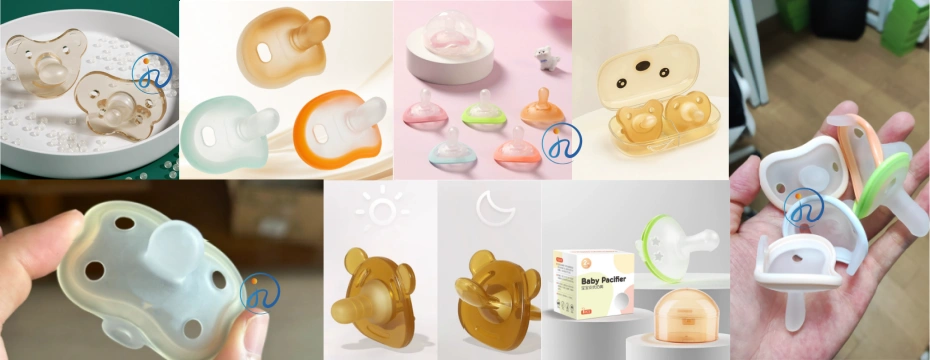
2. Why Do Babies Need Pacifiers?
Babies are born with a strong sucking reflex that helps them feed and self-soothe. Even when they are not hungry, they may still want to suck to calm themselves. Here are the primary reasons babies use pacifiers:
- Soothing comfort: Helps calm crying or fussiness
- Sleep support: Assists babies in falling and staying asleep
- Distraction: Useful during vaccinations, doctor visits, or travel
- SIDS prevention: Studies suggest pacifiers may reduce the risk of Sudden Infant Death Syndrome when used during sleep
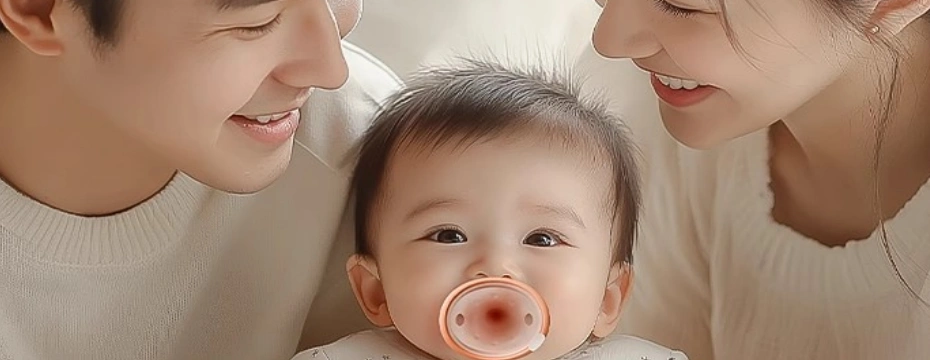
3. Why Is Silicone Preferred for Pacifiers?
While pacifiers can be made from rubber, latex, or plastic, silicone pacifiers are considered the safest and most durable option by pediatricians and manufacturers alike. Here’s why:
Safety and Hygiene
Silicone is non-toxic, BPA-free, and resistant to bacteria. It doesn’t retain odors or absorb liquids, making it an ideal material for oral use in infants.
Heat Resistance
Unlike latex or rubber, silicone can withstand high temperatures, making it safe for boiling, sterilizing, and dishwasher use.
Longevity
Silicone is more durable than rubber or latex. It doesn’t wear down as easily and is less likely to crack or degrade over time.
Hypoallergenic Properties
Natural rubber latex can cause allergies in some infants. Silicone, being a synthetic material, is hypoallergenic and safe for sensitive babies.
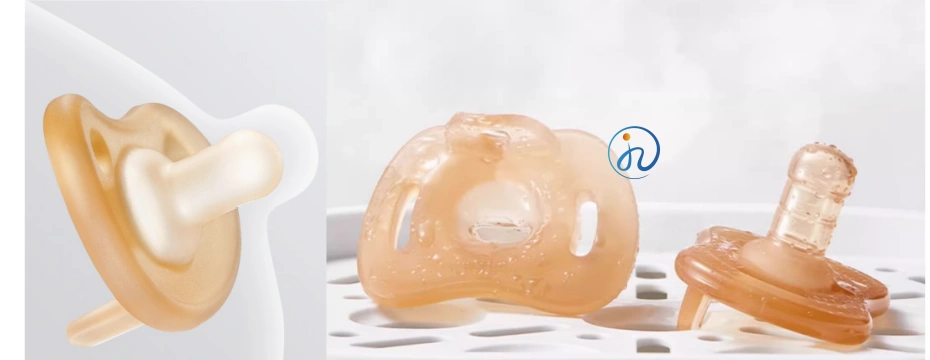
4. Key Benefits of Silicone Pacifiers
Using silicone pacifiers provides multiple advantages for both babies and caregivers:
Comfort & Emotional Support
Silicone pacifiers help reduce stress and anxiety, giving babies a sense of comfort and security.
Oral Health Benefits
Modern pacifiers are designed with orthodontic features that support healthy oral development and prevent future dental issues when used correctly.
Easy Maintenance
They are easier to clean and sterilize than their rubber counterparts, reducing the risk of infections.
Travel Companion
Silicone pacifiers offer a convenient way to soothe babies during flights, car rides, or unfamiliar environments.
5. Are Silicone Pacifiers Safe?
Yes, when used properly and chosen from reputable manufacturers, silicone pacifiers are extremely safe. However, parents should take the following precautions:
- Choose BPA-free, FDA-approved silicone pacifiers
- Inspect regularly for wear and tear
- Replace every 4–6 weeks or sooner if damaged
- Never tie the pacifier around a baby’s neck to avoid strangulation hazards
- Follow the age recommendation on the product
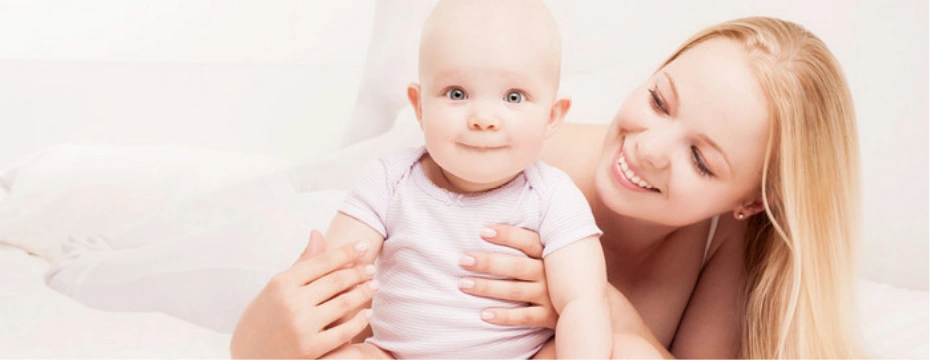
6. Silicone vs. Latex Pacifiers: A Quick Comparison
| Feature | Silicone Pacifier | Latex Pacifier |
|---|---|---|
| Material Type | Synthetic | Natural |
| Allergic Reactions | Very rare | Possible |
| Durability | High | Lower |
| Cleaning | High-temperature safe | May degrade with heat |
| Taste/Odor | Odorless, tasteless | Slight rubber taste |
7. How to Choose the Right Silicone Pacifier
Choosing the right silicone pacifier involves more than picking a cute design. Consider the following factors:
Age-Appropriate Design
Pacifiers are usually labeled by age group: 0–3 months, 3–6 months, and 6–18 months. The nipple shape and shield size vary to match developmental needs.
One-Piece Construction
For safety, choose a one-piece silicone pacifier with no detachable parts that could pose a choking risk.
Orthodontic Shape
Opt for a flat-bottom or symmetrical nipple that promotes healthy oral development.
Ventilation Holes
The shield should have holes to allow airflow, reducing the risk of skin irritation or rashes.
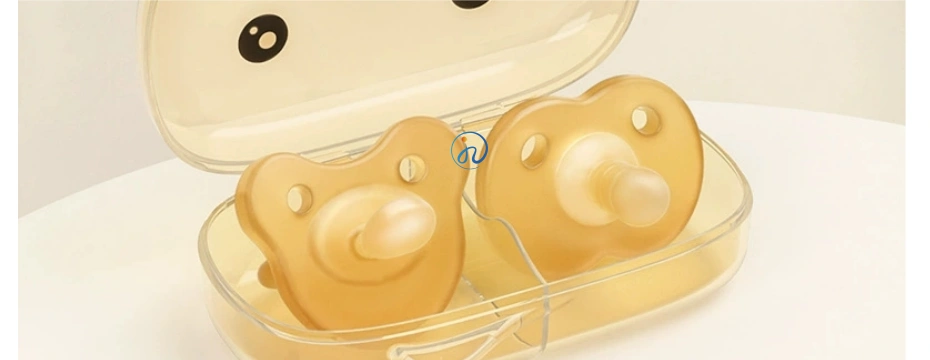
8. Tips for Using Silicone Pacifiers Safely
- Clean regularly: Wash daily and sterilize before first use
- Use only when necessary: Avoid over-dependency to prevent speech or dental issues
- Gradual weaning: Begin pacifier weaning around 12–18 months
- Avoid coating with sweeteners: Never dip in honey or syrup, which can cause tooth decay or botulism
9. Common Myths About Silicone Pacifiers
“Pacifiers will ruin your baby’s teeth.”
Proper use of orthodontic silicone pacifier will not affect dental health if phased out before age 2–3.
“Only breastfeeding babies should avoid pacifiers.”
While early introduction may affect latch in the first few weeks, pacifiers can be safely used once breastfeeding is established.
“Silicone is a harmful plastic.”
High-quality silicone used in baby pacifiers is FDA-approved and non-toxic. It is not the same as traditional plastic.
10. When to Wean Off Silicone Pacifiers
Most pediatricians recommend weaning off pacifiers between 12 and 24 months to avoid dependency and speech delays. The process should be gradual, offering other sources of comfort like soft toys or soothing routines.
Conclusion: Why Silicone Pacifiers Are a Smart Choice for Babies
Silicone pacifiers offer a safe, soothing, and hygienic solution to help babies navigate their early months with more comfort and calm. They support emotional regulation, reduce the risk of SIDS, and are designed to be parent-friendly in terms of cleaning and maintenance.
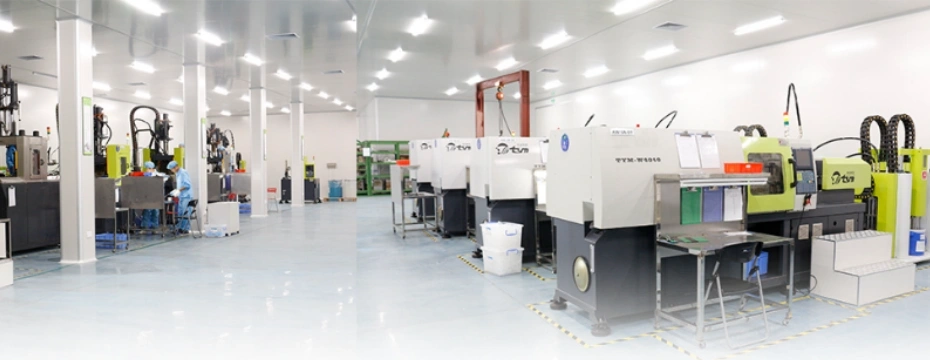
For parents seeking a reliable, durable, and health-conscious option, silicone pacifiers are the go-to choice. When used wisely and in moderation, they can be an essential part of your baby’s early development and well-being.